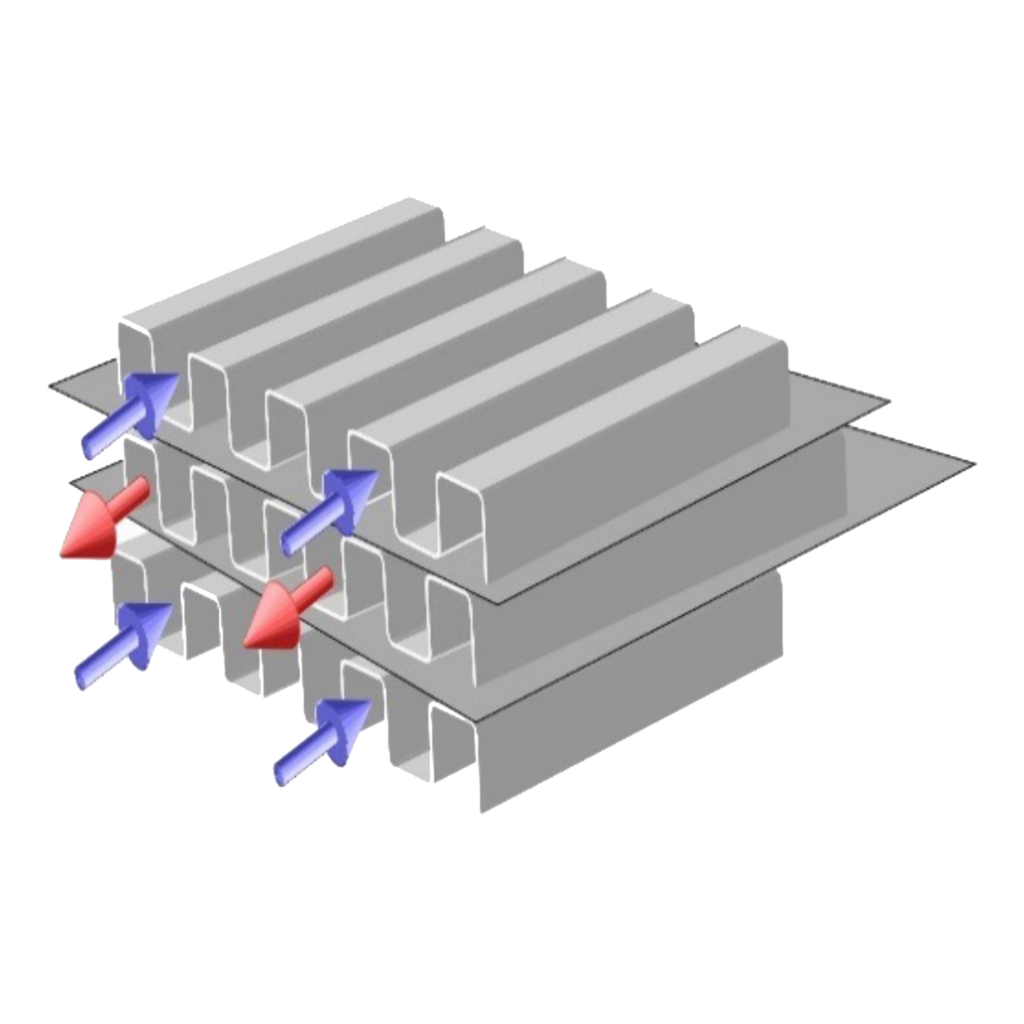Home / Technology + Solutions / Plate Fin Heat Exchanger
Plate-Fin
Heat Exchanger
Efficiency and effectiveness
without compromise
Navigate to Next-Level Performance

Plate-Fin Heat Exchangers tune-in to the level of efficiency you need
To make them more efficient, you typically must also make them larger and, therefore, they cost more. With our unmatched technology and expertise, our team has squeezed a lot of effectiveness into a smaller area with our patented Plate-Fin Heat Exchanger. This unique solution is a compact option for applications with tight volume or weight requirements since it can contain large heat recovery surface areas within small volumes.

Our distinctive design features increased heat transfer surface area that conducts heat more efficiently than the competition. The fin area also adds to the structural integrity of the heat exchanger to allow the device to withstand higher pressures than comparable designs. The fin area, shape, and type can be adjusted to optimize heat transfer, flow rate, and pressure drop.
Quick SPECS
| Overview | Design Pressure | Design Temperature | Applications |
|---|---|---|---|
Our distinctive design features increased heat transfer surface area that conducts heat more efficiently than the competition. The fin area also adds to the structural integrity of the heat exchanger to allow the device to withstand high pressures than comparable designs. The fin area, shape, and type can be adjusted to optimize heat transfer, flow rate, and pressure drop. | Up to 200psi | Up to 1800F°+/1000°C+ | Gas/Gas heat recovery Gas/Liquid heat recovery |
| Advantages | Markets | ||
|
| ||
| Overview |
|---|
| Our distinctive design features increased heat transfer surface area that conducts heat more efficiently than the competition. The fin area also adds to the structural integrity of the heat exchanger to allow the device to withstand high pressures than comparable designs. The fin area, shape, and type can be adjusted to optimize heat transfer, flow rate, and pressure drop. |
| Design Pressure |
| Up to 200psi |
| Design Temperature |
| Up to 1800F°+/1000°C+ |
| Applications |
| Gas/Gas heat recovery Gas/Liquid heat recovery |
| Advantages |
|
| Markets |
|
